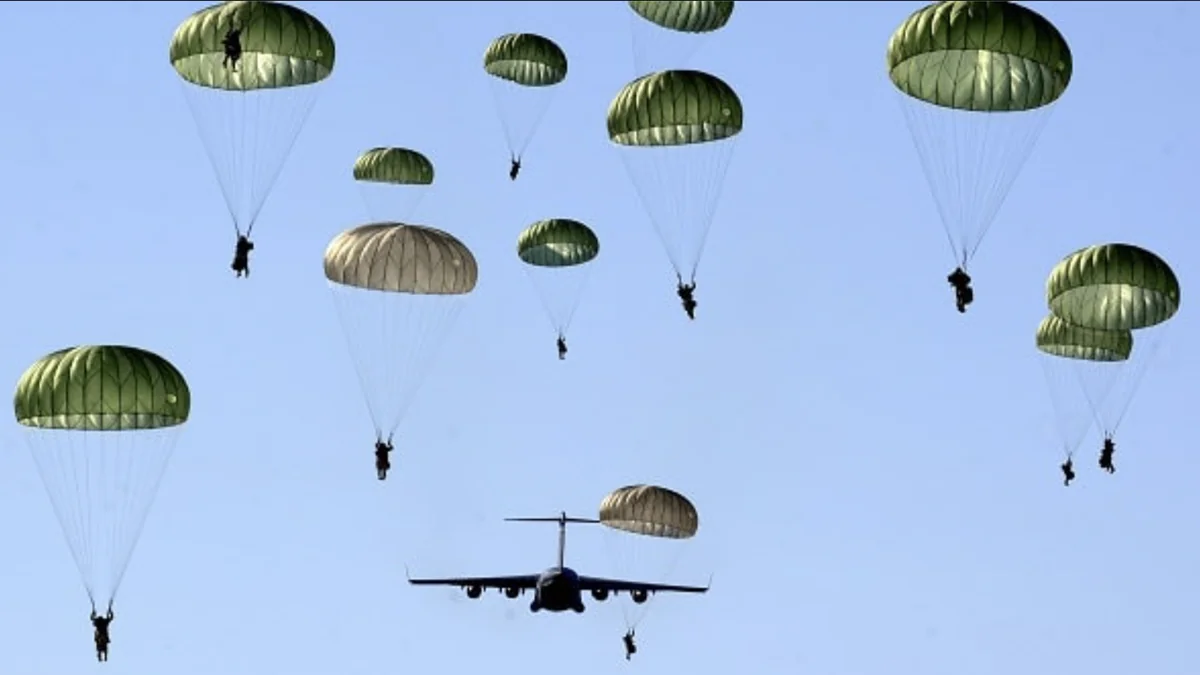Many people feel anxious about flying and wonder why there isn’t a parachute available for every passenger on board. At any given moment, thousands of airliners are in the sky, carrying hundreds of thousands of passengers around the world. Air travel is considered the safest mode of transportation, with the risk of an aviation accident being much lower than the risk of a train or car accident.
When exploring the history of civil aviation, experts note that approximately 50,000 people have died in aviation accidents over time. This is a significant number, indicating that there are issues with air travel. However, flying on passenger airliners has become safer every year. Yes, accidents in civil aviation still occur, and they are widely reported and discussed. However, the statistics are now much less alarming. For example, in 2023, 364 people worldwide died in aviation accidents—a number comparable to the deaths in car accidents in Ukraine in less than two months. And that’s not even considering the toll of military conflicts.
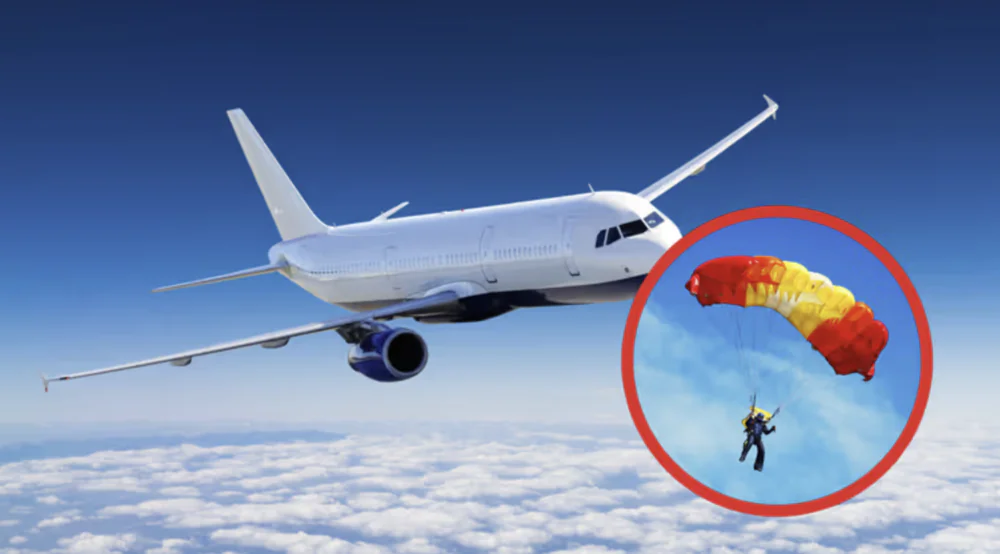
On the other hand, it’s important to note that in a car crash, you might have a chance to survive and escape with minor injuries. But in an aviation accident, survival is usually unlikely. This is why many potential passengers on international flights wonder why parachutes are not provided for everyone on board. Today, we’ll try to explore this question in more detail.
Read also:
- Best Ukrainian Military UAVs, Part 1: Reconnaissance and Targeting
- Boeing and Antonov to Collaborate on Defense Projects
TABLE OF CONTENT:
Briefly about the parachute
The parachute is an invention that predates the airplane by far. Even 150 years before the Wright brothers’ first flight, daredevils around the world were jumping from various heights using more or less complex homemade devices to slow their fall. Of course, there were many tragic incidents, but fortunately, the invention of the true parachute occurred before the advent of the first aircraft.
The modern aviation parachute likely began its history in 1908 when Leo Stevens came up with the idea to pack a parachute into a container that could be worn like a backpack and attached to the pilot’s back with a harness. This was when the characteristic method of opening a parachute with a ripcord was born. The invention was further refined, especially during the two world wars that followed, leading to the widespread use of airplanes and, consequently, parachutes.

To this day, parachutes are standard equipment on military and some civilian aircraft, yet they are not used on passenger flights. This raises the question: why? Wouldn’t providing each passenger with a parachute help prevent deaths in aviation accidents?
Let’s examine this issue from several perspectives. Is the idea of providing every passenger with a parachute truly absurd and incapable of saving any lives? Not necessarily. If such a project were implemented on every passenger plane, it’s likely that some lives could be saved.
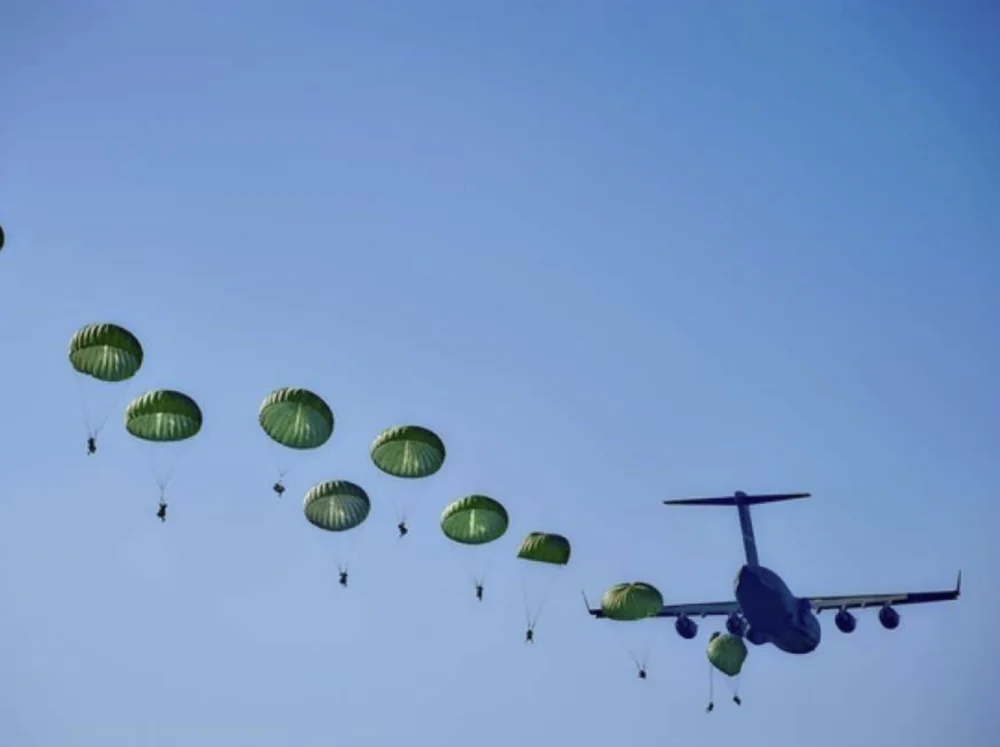
At first glance, the idea that every airplane passenger could have their own parachute seems great—if something happens during the flight, the parachute opens, and the passenger survives. Even a 1% chance of survival is better than 0%, right? Unfortunately, even that 1% seems overly optimistic. The reality is that the percentage of people who would actually survive in such a situation is extremely low.
Let’s take a look at the main reasons why parachutes are not provided to every passenger on a commercial flight.
Parachute is expensive
Human life is invaluable, and there’s no debate about that. However, in every situation, there’s a limit to how much money is reasonable to spend for a minuscule chance of survival. Moreover, storing parachutes for dozens, if not hundreds, of people presents another challenge. Where would they be kept? If under the seats, there wouldn’t be enough legroom, or the seats wouldn’t fold. If stored overhead, there would be no space left for carry-on luggage.

Parachutes are also significantly heavier than the life vests found on every passenger aircraft. The average parachute weighs several kilograms. If you multiply that by, say, 250 passengers on a Boeing 787, you’re looking at several additional tons. This added weight would increase fuel consumption, leading to higher ticket prices for each passenger. To offset this substantial weight, some passenger seats would need to be removed.
Parachute storage cabinets, constant maintenance, and regular replacements would be required. The cost of such additional equipment would exceed half a million dollars.
This is an excessively high cost, especially considering that, as the following examples will illustrate, having a parachute on board does not guarantee complete safety for the passenger.
Everyone must be trained
Forcing airline passengers to use parachutes without proper training would be highly irresponsible. Even tandem jumps require some preparation and instruction on safety rules. During a commercial flight, each person on board cannot have a personal instructor, meaning they would have to take care of themselves. This increases the risk to passengers even after jumping with a parachute. Simply put, some parachutes might not even deploy, adding to the danger.
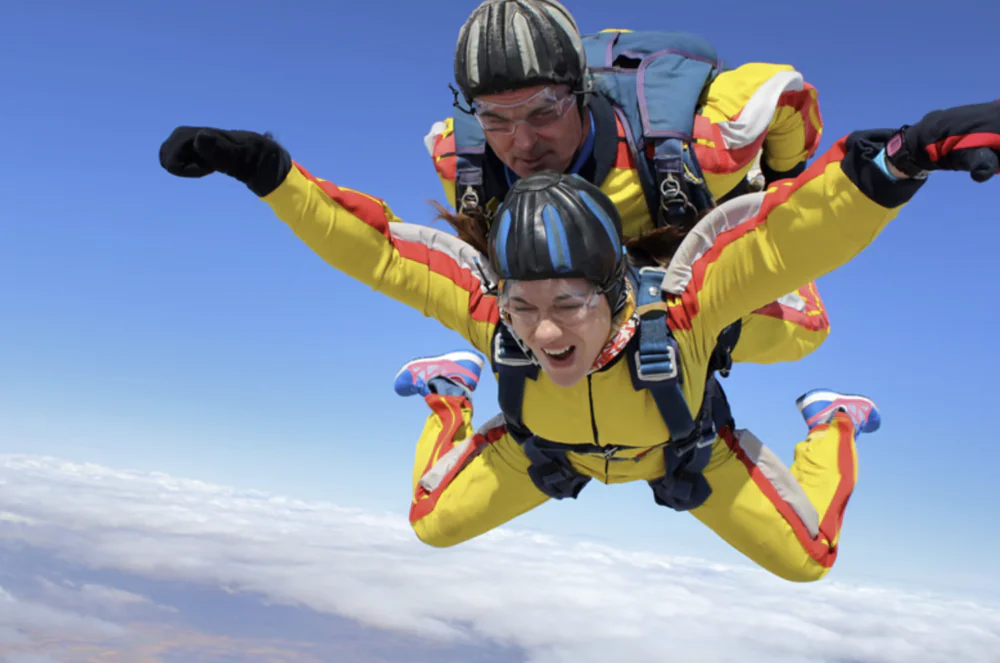
The only solution in such a situation would be mandatory training before the first flight. This would likely involve costs for a special certification allowing passengers to board an aircraft with a parachute. Otherwise, it might turn out that jumping could cause more harm than staying on the plane. Not all passengers would be physically able to complete these training courses.
Many passengers already struggle with even a small seatbelt! Consider the challenges for infants, children, the elderly, and people with disabilities. Adding to this the inevitable chaos that would ensue in the confined cabin space… It becomes clear that providing parachutes to every passenger is not a practical solution.
Read also: Lesser-Known Pages of Aviation History: Bell X-1 – The First Supersonic Aircraft
A falling airplane can be saved
In the case of passenger aircraft, the probability of a catastrophic loss is low but not zero. For example, the Boeing 737-300 has a glide ratio of 17:1. This means that if the aircraft loses power in both engines at its cruising altitude of 11 km, it could theoretically glide approximately 187 km to, for instance, reach the nearest airport..
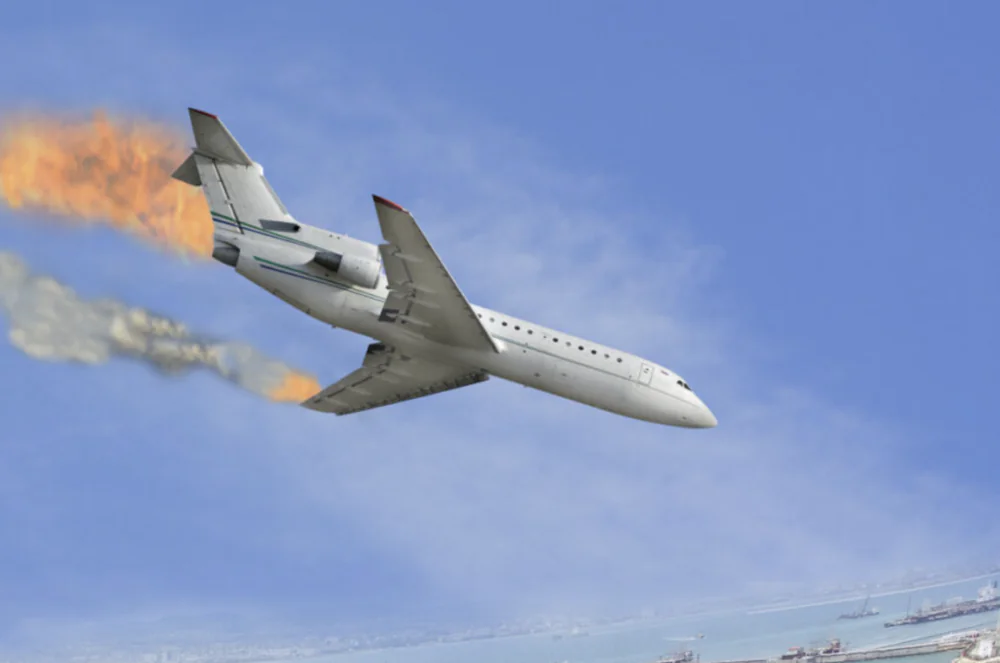
Of course, this also depends on other malfunctions, particularly failures in control systems. In the described scenario of engine power loss, greater danger could await those attempting to exit the aircraft. However, there are increasing instances in modern aviation history where aircraft with engine failures have managed to reach an airfield. Autopilot systems, for example, help manage and rectify emergency situations, improving the chances of safely handling such incidents.
Passenger aircraft are not designed for skydiving
Modern airliners are indeed massive compared to fighter jets, making the safe deployment of parachutes even more complex. Ensuring that the aircraft’s structure does not pose a risk to people exiting is crucial. There is a risk of hitting various structural elements, which could lead to injury or even worse outcomes.
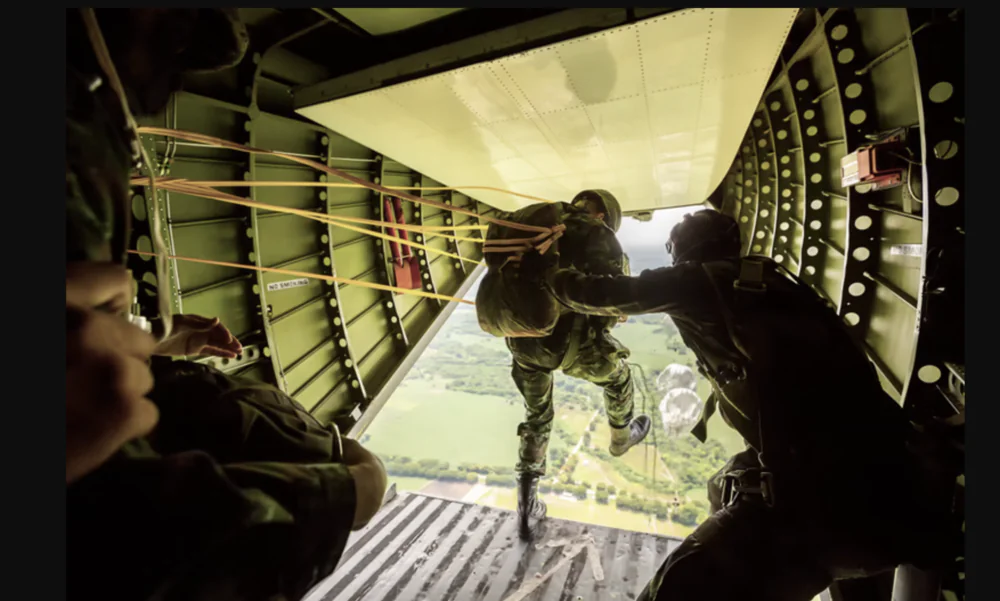
Jumping from a parachute out of a large aircraft poses significant risks, such as colliding with the wing, tail, or engine at high speeds. There is also the danger of being exposed to hot exhaust gases from the jet engine. Additionally, the parachute itself could catch fire. Passenger airliners lack specialized hatches or equipment for such jumps, making the process extremely hazardous.
Read also:
- Lesser-Known Pages Pages of Aviation History: Northrop XP-79B “Flying Ram” – The Ramming Attack Aircraft
- Ukrainian Forces Shoot Down Russian Mi-8 Helicopter with FPV Drone
You can’t open the door at an altitude of 11 km
Another issue is related to the laws of physics. The pressure difference between the inside and outside of the cabin makes it nearly impossible to open standard doors at such high altitudes. A possible solution could be a ramp similar to those used in military transport aircraft, which allows for a controlled and safer exit.

Powerful hydraulic drives could overcome the pressure difference, or explosive charges could create an opening in the aircraft’s fuselage. Sounds dangerous, right? This could potentially cause even more damage to an aircraft that is already in distress.
Lack of a special suit and oxygen mask
Even if you manage to open the doors, at an altitude of 10-11 km, the temperature can drop to -50°C. It’s extremely cold, and there isn’t enough air to breathe. For this reason, without a specialized suit and oxygen mask, there’s virtually no chance of safely parachuting from such a height.
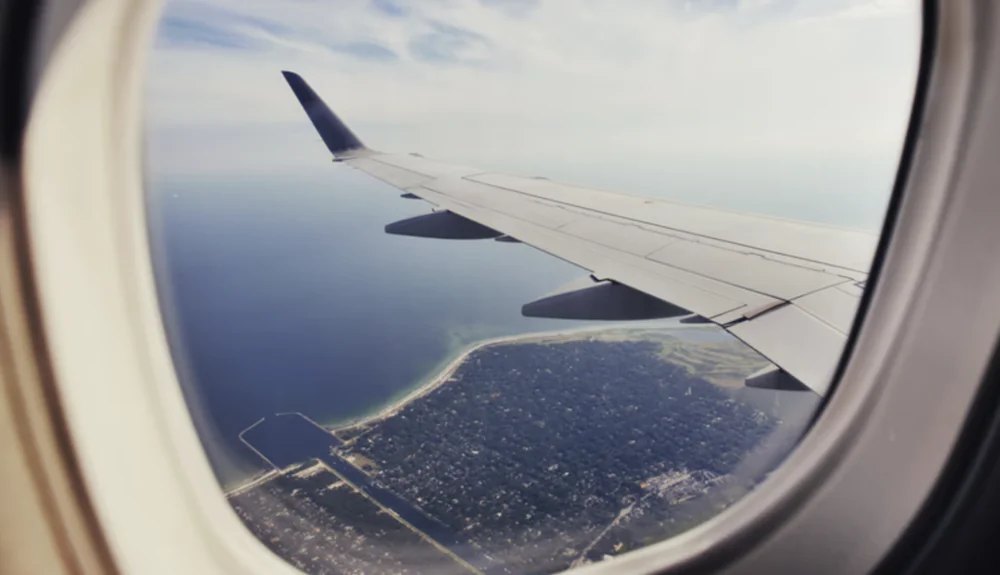
And there are no such suits or masks on board the plane either. An alternative is to wait until the plane descends. However, in that case, it’s safer to just wait and hope the crew can resolve the issue. Otherwise, your chances are slim. You would face death from the cold, lack of oxygen, and other dire prospects.
Panic on board
Experience from numerous aviation accidents shows that people often cannot remain calm and follow procedures when in danger. Emergency landing recordings (such as those without landing gear) reveal passengers losing their composure or trying to retrieve their luggage, which, by all rules, they should leave on the plane. Panic can even hinder the ability to open doors for jumping. Not to mention the narrow aisles in passenger aircraft. Time is critical, and it could come down to minutes, or even seconds.
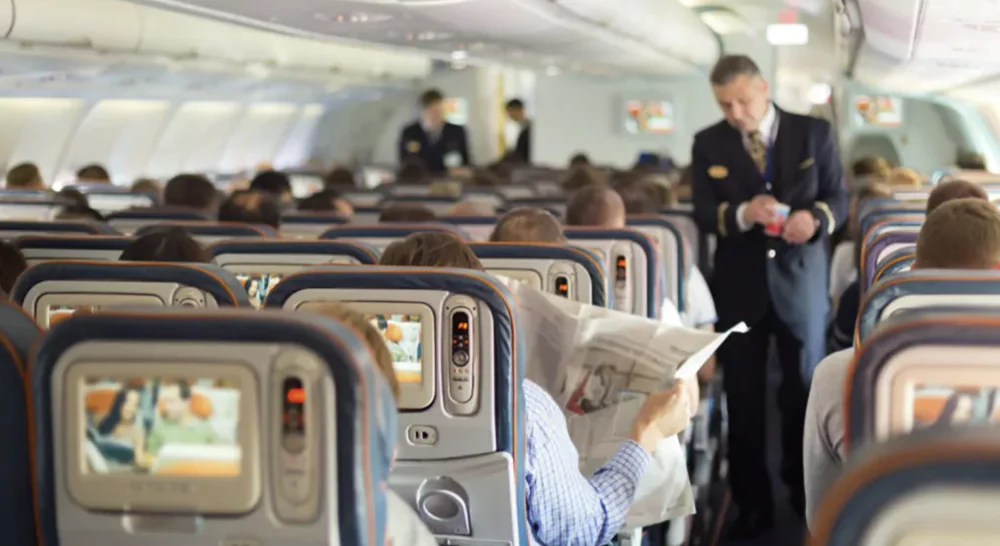
Unfortunately, the chances that passengers will calmly follow all procedures in a serious emergency, put on parachutes, and evacuate one by one without争ing for priority are quite low. That’s just human nature and psychology.
Read also:
- Lesser-Known Pages of Aviation History: Bachem Ba-349A Natter – One-Time-Use Rocket Interceptor
- “Invisible” Aircrafts: How Stealth Technology Works in Aviation
Most malfunctions occur during takeoff and landing
Ultimately, parachutes would not be helpful in the types of crashes that most commonly occur during the final stages of flight, specifically during the approach to landing and the landing itself. Additionally, passengers are strapped into their seats, and the aircraft is flying too low to consider a safe jump. Statistics don’t lie—approximately half of all aviation accidents occur during the final approach and landing phases.
Accidents also happen during takeoff, but statistically, these make up only about 14%. Overall, takeoff and landing—the two phases of flight where parachutes cannot be used—account for at least two-thirds of all fatal aviation incidents.

As you can see, having parachutes onboard a passenger aircraft would be impractical. It could lead only to chaos, panic, and even greater problems in an emergency situation.
Moreover, statistics show that among the most popular modes of transportation, including rail, sea, and road, aviation is considered the safest. According to the International Civil Aviation Organization (ICAO) at the United Nations, only one in a million passenger flights ends in tragedy. The chance of being involved in an aviation accident is 1 in 8 million, which is incomparable to the risk of dying in a road traffic accident. Wishing you a pleasant flight and a smooth landing!
Read also:


